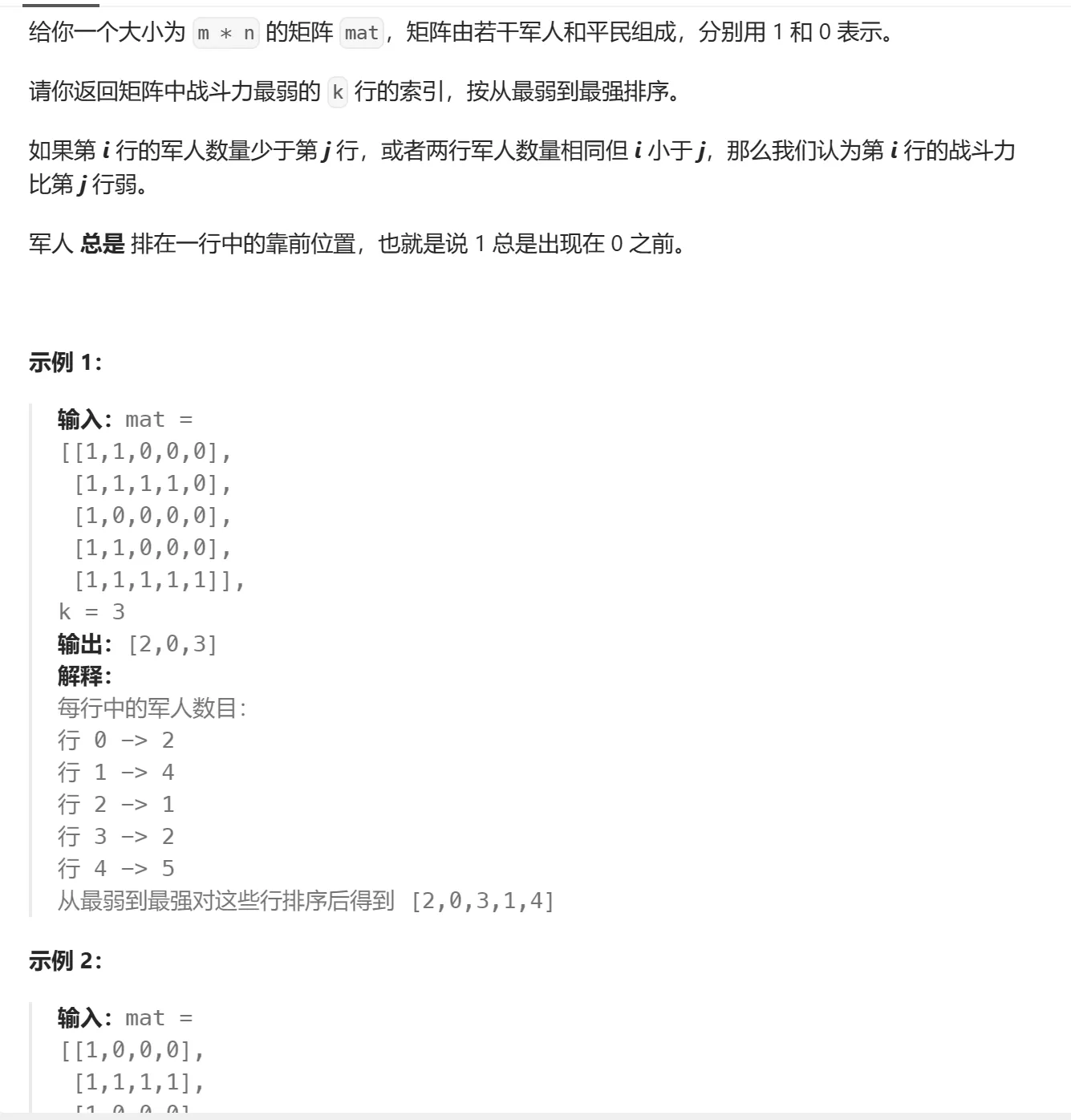请注意,本文编写于 619 天前,最后修改于 619 天前,其中某些信息可能已经过时。

刚开始想到的做法比较朴素,但是能过,相当于暴力,用一个哈希表,key存储每一行的索引,value存储每一行的总和,定义排序规则,value相等按key排序,不然直接按value大小排序,直接输出前k位的key就好。
cppclass Solution {
public:
static bool compare(const std::pair<int, int>& a, const std::pair<int, int>& b) {
if (a.second == b.second) {
return a.first < b.first;
}
return a.second < b.second;
}
std::vector<int> kWeakestRows(std::vector<std::vector<int>>& mat, int k) {
std::unordered_map<int, int> counts;
// 遍历矩阵的每一行,计算军人总数并存储到 counts 哈希表中
for (int i = 0; i < mat.size(); i++) {
int count = 0;
for (int j = 0; j < mat[i].size(); j++) {
count += mat[i][j];
}
counts[i] = count;
}
// 对 counts 哈希表进行排序,排序规则是先按总数排序,若总数相等则按索引排序
std::vector<std::pair<int, int>> sorted_counts(counts.begin(), counts.end());
std::sort(sorted_counts.begin(), sorted_counts.end(), compare);
// 取出前 k 个索引,存储到结果向量中
std::vector<int> result;
for (int i = 0; i < k; i++) {
result.push_back(sorted_counts[i].first);
}
return result;
}
};
这样消耗的空间比较大,但是朴素又简单。后面想一下,这哈希表好像没有屁用。。。
cppclass Solution {
public:
static bool compare(const std::pair<int, int>& a, const std::pair<int, int>& b) {
if (a.second == b.second) {
return a.first < b.first;
}
return a.second < b.second;
}
std::vector<int> kWeakestRows(std::vector<std::vector<int>>& mat, int k) {
std::vector<std::pair<int, int>> counts;
// 遍历矩阵的每一行,计算军人总数并存储到 counts 中
for (int i = 0; i < mat.size(); i++) {
int count = 0;
for (int j = 0; j < mat[i].size(); j++) {
count += mat[i][j];
}
counts.push_back({i, count});
}
// 对 counts 进行排序,排序规则是先按总数排序,若总数相等则按索引排序
std::sort(counts.begin(), counts.end(), compare);
// 取出前 k 个索引,存储到结果向量中
std::vector<int> result;
for (int i = 0; i < k; i++) {
result.push_back(counts[i].first);
}
return result;
}
};
本文作者:yowayimono
本文链接:
版权声明:本博客所有文章除特别声明外,均采用 BY-NC-SA 许可协议。转载请注明出处!